假如我现在需要在读数据库的同时往磁盘里写数据,这个要怎么做呢?
package com.thread.thread01;
/**
* @program: ThreadDemo
* @description: 创建并启动线程
* @author: hs96.cn@Gmail.com
* @create: 2020-08-26 09:56
*/
public class TryConcurrency {
public static void main(String[] args) {
readFromDataBase();
writeDataToFile();
}
/**
* 读数据
*/
private static void readFromDataBase() {
// read data from database and handle it
try {
println("Begin read data from db.");
Thread.sleep(1000 * 1L);
println("Read data done and start handle it.");
} catch (InterruptedException e) {
e.printStackTrace();
}
println("The data handle finish and successfully.");
}
/**
* 写数据
*/
private static void writeDataToFile() {
// write data to file
try {
println("Begin write data to file.");
Thread.sleep(1000 * 1L);
println("Write data done and start handle it.");
} catch (InterruptedException e) {
e.printStackTrace();
}
println("The data handle finish and successfully.");
}
private static void println(String message) {
System.out.println(message);
}
}
运行效果如下:

可以看到这两个方法其实是顺序执行的不是交替执行的,接下来我们打开JDK的文档,找到Thread类:
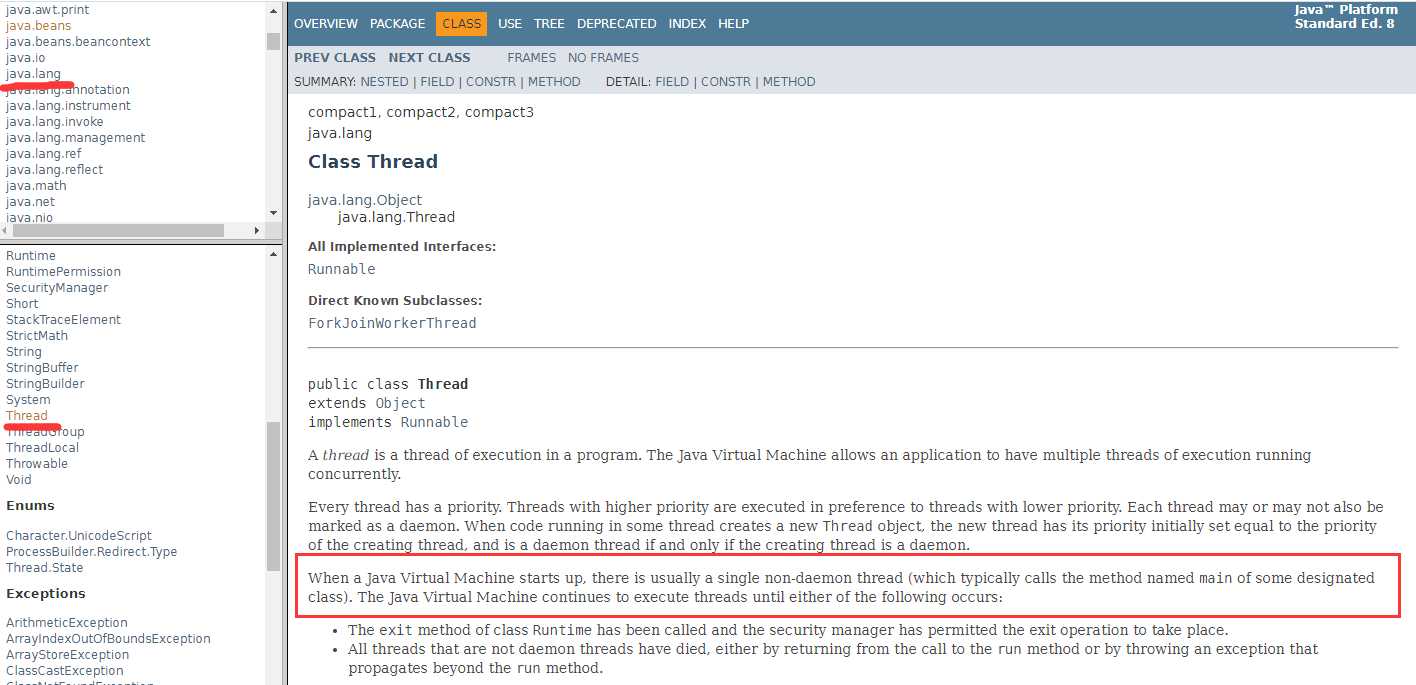
可以看到在JVM启动的时候其实有一个非守护的main线程来启动我们的main函数。
为了验证这个,我们来创建一个sleep的线程,我们来使用jconsole工具来查看一下:
public static void main(String[] args) {
try {
Thread.sleep(1000 * 100L);
} catch (InterruptedException e) {
e.printStackTrace();
}
}


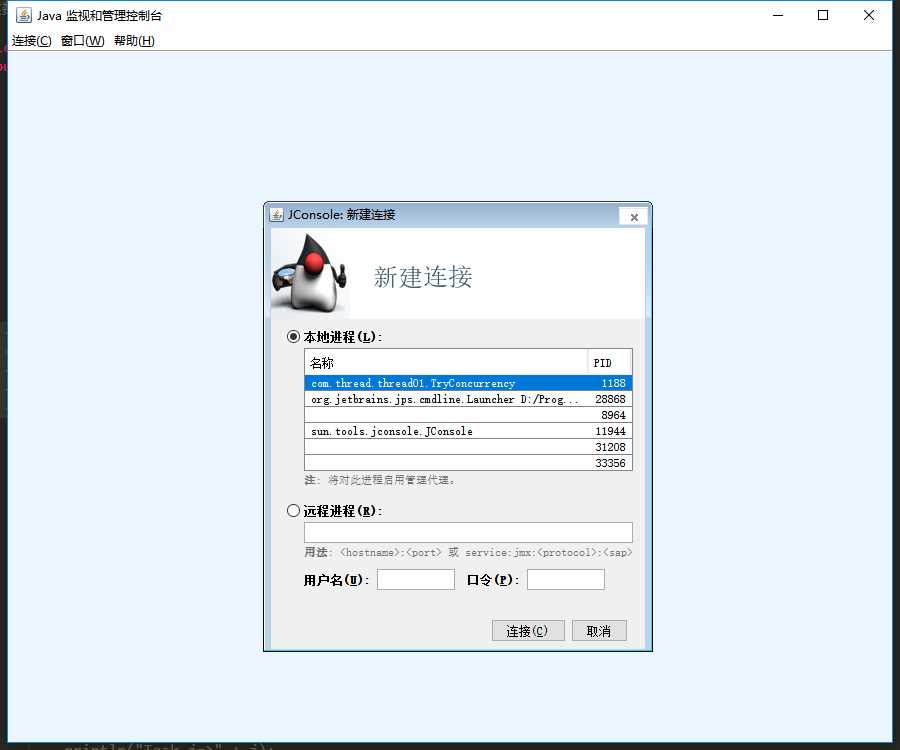
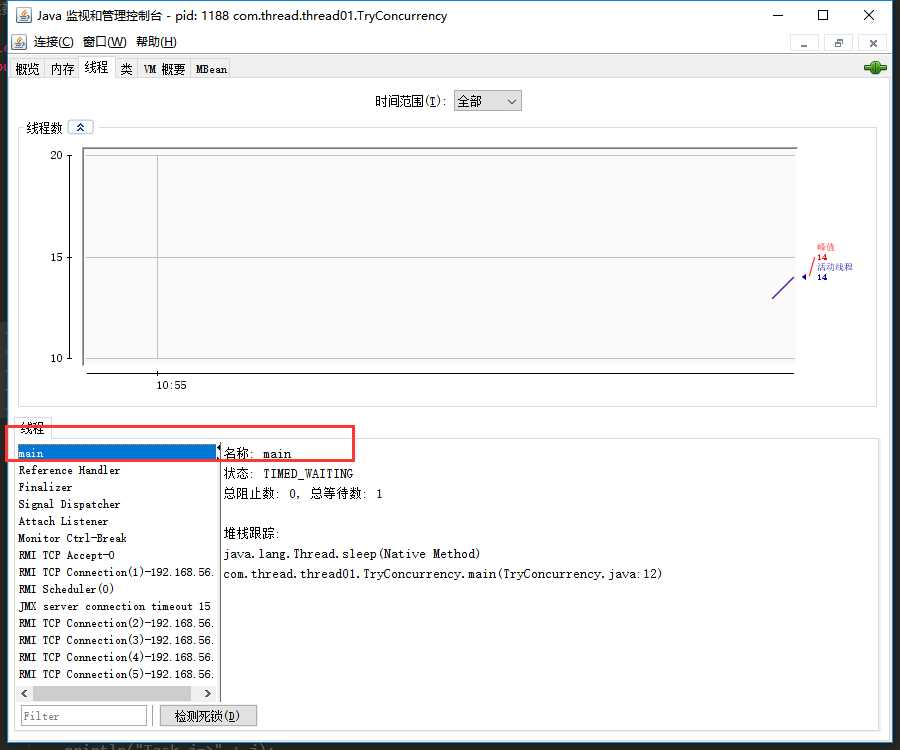
可以看到是有一个main线程存在的,他是waiting状态,所以,我们可以在main方法里,再创建一个线程,让这两个线程交替打印一下数字:
public static void main(String[] args) {
Thread t1 = new Thread("Custom-Thread") {
@Override
public void run() {
for (int i = 0; i < 1000; i++) {
println("Task i=>" + i);
try {
Thread.sleep(1000 * 1L);
} catch (InterruptedException e) {
e.printStackTrace();
}
}
}
};
t1.start();
for (int j = 0; j < 1000; j++) {
try {
Thread.sleep(900 * 1L);
} catch (InterruptedException e) {
e.printStackTrace();
}
println("Task j=>" + j);
}
}
效果如下:

可以看到这两个线程已经交替执行了。
再用jconsole查看一下:
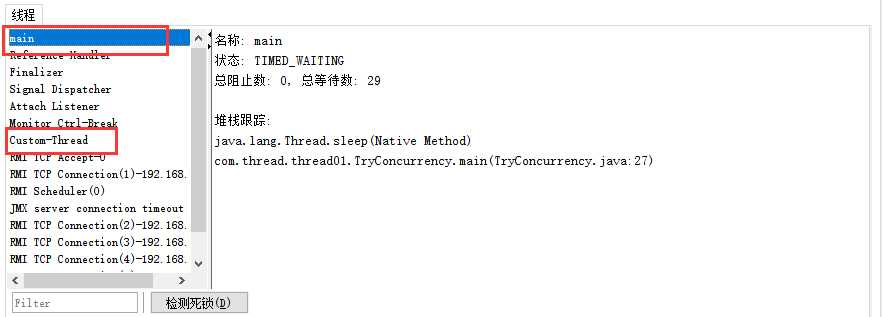
把main线程的循环注释掉:
public static void main(String[] args) {
Thread t1 = new Thread("Custom-Thread") {
@Override
public void run() {
for (int i = 0; i < 1000; i++) {
println("Task i=>" + i);
try {
Thread.sleep(1000 * 1L);
} catch (InterruptedException e) {
e.printStackTrace();
}
}
}
};
t1.start();
/*for (int j = 0; j < 1000; j++) {
try {
Thread.sleep(900 * 1L);
} catch (InterruptedException e) {
e.printStackTrace();
}
println("Task j=>" + j);
}*/
}
再用jconsole查看一下:

main线程已经退出了。
还有一个容易忽略的问题:
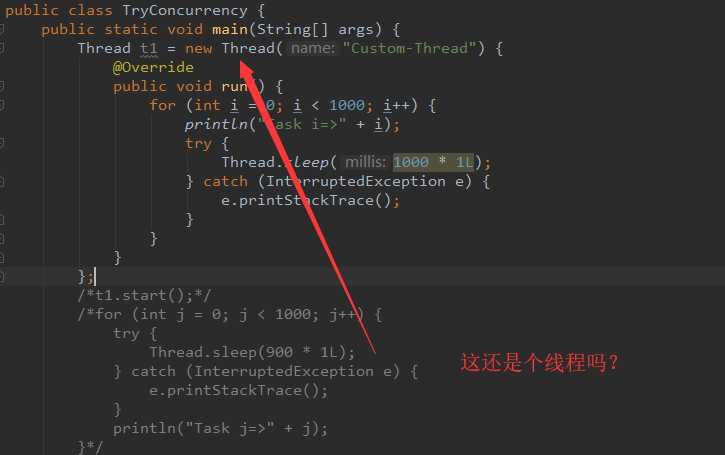
显然不是,因为执行结果直接就出来了:

这里涉及到线程的生命周期了,后续再深入学习,这里只提一下。
现在再思考之前提出的问题:假如我现在需要在读数据库的同时往磁盘里写数据,这个要怎么做呢?
/**
* @program: ThreadDemo
* @description: 创建并启动线程
* @author: hs96.cn@Gmail.com
* @create: 2020-08-26 09:56
*/
public class TryConcurrency {
public static void main(String[] args) {
new Thread("READ-Thread") {
@Override
public void run() {
readFromDataBase();
}
}.start();
new Thread("WRITE-Thread") {
@Override
public void run() {
writeDataToFile();
}
}.start();
}
/**
* 读数据
*/
private static void readFromDataBase() {
// read data from database and handle it
try {
println("Begin read data from db.");
Thread.sleep(1000 * 1L);
println("Read data done and start handle it.");
} catch (InterruptedException e) {
e.printStackTrace();
}
println("The data handle finish and successfully.");
}
/**
* 写数据
*/
private static void writeDataToFile() {
// write data to file
try {
println("Begin write data to file.");
Thread.sleep(1000 * 1L);
println("Write data done and start handle it.");
} catch (InterruptedException e) {
e.printStackTrace();
}
println("The data handle finish and successfully.");
}
private static void println(String message) {
System.out.println(message);
}
}
执行效果如下:

可以看到已经交替执行了。
再用jconsole查看一下:
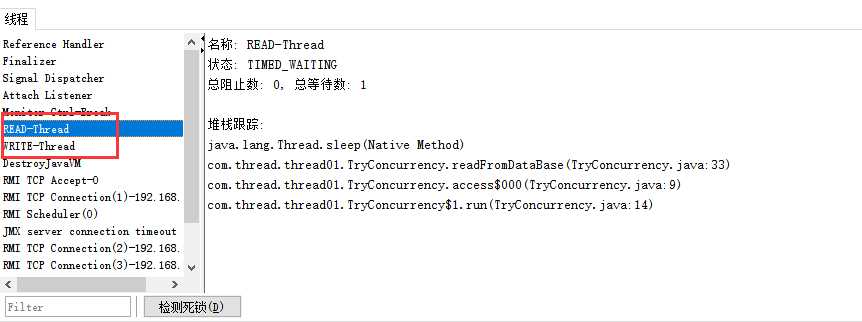
这样我们就简单的实现了读数据库的同时往磁盘里写数据的操作。当然虽然没真正的度数据库和往磁盘里写数据,但是,主要还是理解这个交替执行的过程。
原文:https://www.cnblogs.com/stormsquirrel/p/13570614.html